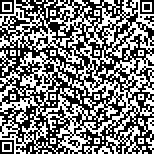| Quote
: |
王建君,余清平,郭丹,廖君,彭骅.基于铁调素调控铁代谢相关蛋白探讨脑泰方干预氧糖剥夺损伤的神经元保护机制[J].湖南中医药大学学报英文版,2022,42(4):542-547.[Click to copy
] |
|
| |
|
|
| This paper
:Browser 2317times Download 744times |
| 基于铁调素调控铁代谢相关蛋白探讨脑泰方干预氧糖剥夺损伤的神经元保护机制 |
| 王建君,余清平,郭丹,廖君,彭骅 |
| (湖南中医药大学医学院, 湖南 长沙 410208;长沙卫生职业学院, 湖南 长沙 410100) |
| 摘要: |
| 目的 观察大鼠原代神经元氧糖剥夺损伤后,脑泰方通过调节二价金属离子转运体1(divalent metal transporter 1,DMT1)、转铁蛋白受体(transferrin receptor, TfR)、铁调素(hepcidin, Hep)及膜铁转运蛋白(ferroportin, FPN)表达变化,探讨脑泰方对氧糖剥夺损伤神经元保护机制。方法 将原代培养大鼠神经元随机分为对照(CG)组、氧糖剥夺模型(OGD)组、脑泰方干预氧糖剥夺模型(NTF)组。MTT法检测各组神经元细胞存活率;荧光探针检测各组神经元细胞内二价铁离子(Fe2+)、活性氧(reactive oxygen species, ROS)浓度;Western blot法检测各组神经元细胞Hep、DMT1、TfR、FPN蛋白表达。结果 与CG组比较,OGD组、NTF组神经元细胞存活率均明显降低(P<0.01);与OGD组比较,NTF组神经元细胞存活率明显升高(P<0.01)。与CG组比较,OGD组、NTF组神经元细胞内Fe2+、ROS浓度均明显升高(P<0.01);与OGD组比较,NTF组神经元细胞内Fe2+、ROS浓度均显著降低(P<0.01)。与CG组比较,OGD组、NTF组神经元细胞Hep表达均明显降低(P<0.01),DMT1、TfR、FPN表达均明显升高(P<0.01);与OGD组比较,NTF组神经元细胞Hep表达明显升高(P<0.01),DMT1、TfR、FPN表达均明显降低(P<0.01,P<0.05)。结论 脑泰方通过促进神经元细胞Hep的表达,抑制神经元细胞DMT1、TfR、FPN表达,减少氧糖剥夺损伤后神经元细胞内Fe2+及ROS聚积,起到保护神经元,减轻氧糖剥夺损伤的作用。 |
| 关键词: 脑泰方 脑缺血 铁调素 二价金属离子转运体1 转铁蛋白受体 膜铁转运蛋白 氧糖剥夺 神经元 |
| DOI:10.3969/j.issn.1674-070X.2022.04.005 |
| Received:December 11, 2021 |
| 基金项目:湖南省自然科学基金项目(2019JJ50434,2021JJ30496);湖南省教育厅科学研究重点项目(20A362)。 |
|
| Mechanism of Naotaifang intervention on oxygen-glucose deprivation injury of neurons based on hepcidin regulating iron metabolism related proteins |
| WANG Jianjun,YU Qingping,GUO Dan,LIAO Jun,PENG Hua |
| (Medical School of Hunan University of Chinese Medicine, Changsha, Hunan 410208, China;Changsha Health Vocational College, Changsha, Hunan 410100, China) |
| Abstract: |
| Objective To explore the protective mechanism of Naotaifang on neurons by observing the expression changes of divalent metal transporter 1 (DMT1), transferrin receptor (TfR), hecpidin (Hep) and membrane iron transporter ferroportin (FPN) after oxygen-glucose deprivation injury in primary neuronal. Methods The rat neurons were maturely cultured and then randomly divided into the control (CG) group, the oxygen-glucose deprivation model (OGD) group and Naotaifang interventing the oxygen-glucose deprivation (NTF) group. Cell viability was measured by MTT assay in each group. The intracellular concentration of ferrous iron (Fe2+) and reactive oxygen species (ROS) in neurons of each group were detected by fluorescent probe. The expression of Hep, DMT1, TfR, FPN were analyzed by Western blot. Results Compared with the CG group, the survival rate of neurons in OGD group and NTF group was significantly lower (P<0.01); compared with OGD group, the survival rate of neurons in NTF group was significantly higher (P<0.01). Compared with CG group, the concentrations of Fe2+ and ROS in neurons of OGD group and NTF group were significantly increased (P<0.01); compared with OGD group, the concentrations of Fe2+ and ROS in neurons of NTF group were significantly decreased (P<0.01). Compared with CG group, the expression levels of Hep in neurons of OGD group and NTF group were significantly decreased (P<0.01), while the expression levels of DMT1, TfR and FPN were significantly increased (P<0.01); compared with OGD group, the expression of Hep in neurons of NTF group was significantly increased (P<0.01), while the expression levels of DMT1, TfR and FPN were significantly decreased (P<0.01, P<0.05). Conclusion Naotaifang can protect neurons and reduce damage of oxygen-glucose deprivation injury by increasing the expression of Hep, inhibiting the expression of DMT1,TfR and FPN, reducing the accumulation of Fe2+ and ROS in neurons after oxygen-glucose deprivation injury. |
| Key words: Naotaifang cerebral ischemia hepcidin divalent metal transporter 1 transferrin receptor ferroportin oxygen-glucose deprivation neuron |
|

二维码(扫一下试试看!) |
|
|
|
|


